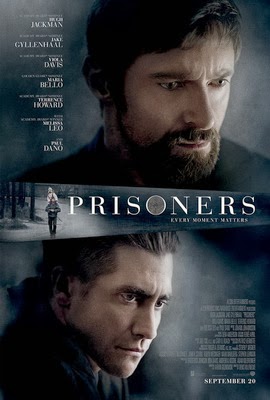Russell Crowe stars as the Scriptural patriarch who gathers his family and two-of-every-kind in a colossal ark after a vision from The Creator informs him that the world is about to perish in a flood. As he gathers his family (wife Jennifer Connelly, sons including Logan Lerman, and daughter-in-law Emma Watson), Noah incurs the wrath of local warlord Tubal-cain (Ray Winstone), who refuses to believe that God has not spoken to him too. Postscript – check out Anthony Hopkins as a berry-gathering Methuselah, doing that wise old man act he’s perfected by now.
Let’s set aside the religious debate right off the bat. The film doesn’t purport Biblical accuracy; in fact, director Darren Aronofsky disavows any such intention. Consequently, I think Noah ought to be measured by the same standards as any other film adaptation of a major mythic narrative, in the vein of superhero or Hercules movies. And there’s nothing in Noah that constitutes an unequivocal betrayal of the source material, nothing incompatible with the core of the original story.
As an interpretive adaptation, then, Noah is mostly successful, though it borders every so often on the bizarre. The film is fortunately anchored by a very compelling and very human performance from Crowe, who imbues Noah with a deeper humanity than most interpretations. Rather than present Noah as a stoic “true believer,” Crowe gives him his moments of doubt, his misinterpretations of the message, and his post-flood uncertainty. (Plus, after this and Man of Steel, Crowe has the market cornered on “dads who put their sons in arks.”)
Aronofsky does some visually clever stuff when he introduces Noah’s visions from The Creator as slideshow dream sequences, working in a nifty sample of the overlap between creationism and evolution. But then the film gets really weird, and by weird I mean “rock people help build the ark.” There’s a bit of murky theology in these rock people being fallen angels who help mankind, and their bids for forgiveness play up a side of Old Testament God that isn’t seen too often. In a movie that otherwise immerses you in a specific time period in antiquity, though, living rocks strain credulity.
The other major subplot Aronofsky introduces is the presence of a tribal chief who goes to war for a spot on the ark. It’s a plausible addition that Noah’s neighbors might have been a bit jealous, and Winstone is wholly engaging as Noah’s foil. Aronofsky uses these villains, though, to posit an underlying vegans-versus-carnivores message that ultimately confounds more than it proselytizes. (Some are reading it as anti-industrialist, though that may be a bridge too far.) It’s fine for establishing a contrast between Noah and the sinners, but it raises major ethical questions: Noah kills three hunters to avenge their killing of an animal for food, but he turns a blind eye to the rape and pillage of actual humans next door. I see what Aronofsky is doing, adding an earthy and spiritual element to Noah’s communion with The Creator, but it’s more distracting than it should be precisely because the logic doesn’t hold up.
All told, though, Noah ends up an engaging film, a successful spectacle – which is, at the end of the day, all I ask of a movie. It’s far from patently offensive, and the parts in the film that work do work very well. Aside from a few silly bits, Noah is big-budget pageantry at its most watchable, put forward by a powerful lead performance and directed by a man with an unmistakable (if punctuated by logical error) directorial vision.
Noah is rated PG-13 for “violence, disturbing images and brief suggestive content.” Aside from the whole exterminating flood, there are a few scenes of bloody combat, other scenes of animals being killed in gory fashion, and a bit of bare-shouldered friskiness from the cast’s younger group.
Next week, something we haven’t done in a very long while – two reviews on the same day. Hint: what’s the big release this Friday? And when is the Double-Oh-Seventh of this month? Put another way, when is an American icon like a British agent? When they’re both reviewed here, that is! See you next week!










